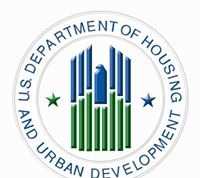Deciding to acquisition a home is a significant life event and one of the most expensive purchases of your life. A way to save money is through a thorough home inspection. Having an inspector examine the home before you buy it, you can save your self the headache of any unexpected repairs or problems.
Home inspections are needed to ensure that everything is in good working order, such as the roof, plumbing, foundation, and electrical system. Home inspectors typically start with the exterior o the home and then head inside to continue their thorough inspection.
Common significant exterior issues can sometimes include trim or wood rot, chimney cracking, a failing roof, grading problems causing the potential for water penetration, window issues, structural issues with decks or porches, or bulkhead problems.
In the interior, most home inspectors begin in the basement since the basement is the critical area of a home, and where any potential issues can be discovered. The standard big interior can include leaking pipes around the boiler, old heating systems, structural cracks in the foundation, past air conditioning, electrical issues, and broken windows or skylights.
Below are five areas to make sure are inspected when you decide to buy a home:
- Inspecting the HVAC System
One of the most expensive components of a home is the heating, ventilation, and air conditioning systems (HVAC). You do not want to buy a new home and down the road to find out you have a faulty HVAC system. Make sure the home inspector checks to make nothing impedes the HVAC system’s airflow, for example, dust, tree branches, or grass clippings. Turn the unit on to make sure the fan turns on. Check airflow to make sure it blows cold and warm air for the summer and winter months.
- Floors, Walls, and Ceilings
A home inspector will examine ceilings, floors, and walls inside the house. Inspectors will look for visible signs of water damage in the home. Water damage can include drywall pulling away from walls and visible cracks in the ceilings or walls that could signal any problems with a home’s foundation. The inspector will take notice of the floors and see if there are any spongy areas if there’s carpet, check for slopes or angles, or any spots that might seem uneven.
- Plumbing & Electrical
When buying a home, make sure your home inspection includes the plumbing and electrical. Never take the seller’s word that the plumbing and electrical are in working order. A home inspector should inspect the plumbing in the kitchen and bathrooms for signs of water stains, mildew, and sagging floors. Every faucet should be turned on to check the water pressure and how long it takes for the water to drain.
A thorough home inspection helps identify the potential electrical issues, which can help save you thousands of dollars in repairs down the road. A home inspector will start at the breaker box and look for signs of any burnt out fuses or switches. Outlets and light switches should be checked.
- Smoke and Carbon Monoxide Detectors
Laws and regulations on smoke and carbon monoxide detectors can change from state to state, but in most of the places, smoke and carbon monoxide detectors are mandatory in any home being sold. A home inspection includes a thorough checking of the existing detectors in the house and their functionality. The review will list if there is a need for new sensors based on current laws and regulations. As soon as you take ownership of the home, as the homeowner, it becomes your responsibility to keep all smoke and carbon monoxide detectors working correctly.
- Mold
Home inspections should include a thorough search for mold because this is an item that is of most concern to home buyers. However, mold in a home can be a common issue that new home buyers might not be aware of. Wherever moisture penetrates the exterior of a house becomes a significant breeding ground for mold to grow. It is essential to remember, as a home buyer, that not all mold problems are equal.
Certain molds, if found, can be a simple item to fix that you can ask the current owners to take care of before you buy the home. If a home inspection comes back with mold, do not freak out, unless the inspector mentions its severity and type. There is a variety of mold, and some can be harmful to your health, but others are nonthreatening. The one mold you should be concerned about being discovered on a home inspection is a toxic mold that needs to be dealt with promptly.
Carefully Read Through the Inspection Report
A home inspection should take no more than three or four hours. After the home inspection is completed, the homeowner will hand you a report that will list any potential problems with the picture included. The key to the examination is to identify any costly problems in the home before signing, and you can use that information to negotiate on the selling price or decide to walk away from buying the house.
The general issues identified on a home inspection checklist might include:
- Faulty plumbing – water stains on ceilings, or low water pressure
- Faulty wiring – open junction boxes, or wires without wire nuts
- Bad gutters – basement dampness, and clogged gutters
- Poor drainage – leaks in the basement, or soggy areas in the yards
- Flaws in foundation – sticking doors or windows, and small foundation cracks
- Poor maintenance – worn shingles, a cracked driveway, or chipped paint.
These are common issues that can come in a home inspection and can be easily fixed with the contractor, such as MD Paving Pros. If the home inspector’s report flags such as roof replacing, flooding zone, major foundation issues, or aluminum wiring can be costly expenses to a home.
The Conclusion
A home inspection is essential to understanding the state of the home you are buying. When waiting for your report, remember that the house isn’t going to be perfect, but the inspection will give an understanding of what you are walking into.














